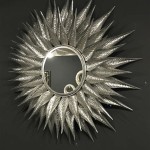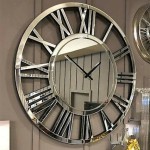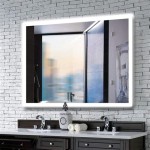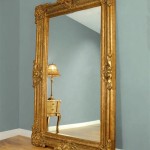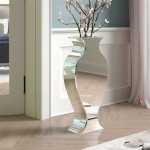Does A Convex Mirror Always Produce a Virtual Image?
Convex mirrors, characterized by their outwardly curved reflecting surface, are ubiquitous in everyday life, from car side mirrors to security surveillance. Their unique optical properties contribute to a wide field of view, making them invaluable for various applications. A common question regarding convex mirrors is whether they always produce virtual images. This article explores the image formation process of convex mirrors to answer this question.
Understanding Image Formation in Convex Mirrors
Image formation in any mirror, including a convex mirror, is governed by the laws of reflection. These laws state that the angle of incidence (the angle between the incident ray and the normal to the surface) is equal to the angle of reflection (the angle between the reflected ray and the normal). Understanding these principles is crucial to comprehending how images are formed.
Key Concepts in Mirror Optics
Several key concepts are essential for analyzing image formation:
- Focal Point (F): The point where parallel rays of light converge after reflection (or appear to converge in the case of a convex mirror).
- Center of Curvature (C): The center of the sphere of which the mirror forms a part.
- Principal Axis: The line passing through the center of curvature and the pole (center) of the mirror.
- Object Distance (u): The distance between the object and the pole of the mirror.
- Image Distance (v): The distance between the image and the pole of the mirror.
- Focal Length (f): The distance between the focal point and the pole of the mirror.
The Mirror Formula and Magnification
The relationship between object distance (u), image distance (v), and focal length (f) is expressed by the mirror formula: 1/u + 1/v = 1/f. For convex mirrors, the focal length is considered negative. Magnification (m) is the ratio of the image height to the object height and is given by m = -v/u. A negative magnification signifies an inverted image, while a positive magnification indicates an upright image.
Image Characteristics in Convex Mirrors
Applying the mirror formula and magnification equation to various object positions in front of a convex mirror reveals consistent image characteristics:
- Virtual: The reflected rays diverge, and the image is formed behind the mirror. It cannot be projected onto a screen.
- Upright: The image is always oriented in the same direction as the object.
- Diminished: The image is always smaller than the object.
The Case of a Virtual Object
While less common, a convex mirror can theoretically form a real image under a specific circumstance: when the object is virtual. A virtual object occurs when converging rays are incident on the mirror, seemingly originating from a point behind the mirror. If these converging rays are intercepted by the convex mirror before reaching their convergence point, the mirror can reflect them to converge and form a real image in front of the mirror. This scenario, however, doesn't contradict the typical behavior of convex mirrors with real objects.
Practical Implications and Applications
The characteristic of convex mirrors to always produce virtual, upright, and diminished images with real objects finds practical application in various fields:
- Automotive Side Mirrors: The wider field of view allows drivers to see a larger area behind them, enhancing safety.
- Security Mirrors: Used in shops and public spaces for surveillance, providing a wider view of the area.
- Traffic Mirrors: Placed at blind corners to improve visibility and prevent accidents.
Ray Diagrams and Image Formation
Ray diagrams are a useful tool for visually representing image formation. Two principal rays are typically used:
- Ray parallel to the principal axis: After reflection, this ray appears to diverge from the focal point.
- Ray directed towards the center of curvature: This ray is reflected back along the same path.
The intersection of the extensions of these reflected rays locates the position of the virtual image.
The Significance of the Virtual Image
The virtual image formed by a convex mirror carries crucial implications for its applications. The diminished size of the image allows a larger field of view to be compressed onto the mirror surface, providing a broader perspective of the surroundings. This characteristic is especially beneficial in safety applications where a wider field of vision is critical.
Can A Convex Mirror Produce Real Image When The Object Is Virtual And Vice Versa Concave If Yes How Will It Be Possible Why Quora
Can A Convex Mirror Form Magnified Image Quora

Can A Convex Mirror Produce Real Image When The Object Is Virtual And Vice Versa Concave If Yes How Will It Be Possible Why Quora
Is It Right A Convex Mirror Always Forms An Inverted Image Quora
Is It Possible For A Convex Mirror To Produce Real Image When The Object Virtual Quora

A Convex Mirror Always Produces An Erect Real Image Of Diminished Sizean Virtual And Enlarged Sizea Size
Can A Convex Mirror Form Real Image Quora

Convex Mirrors

05 Convex Mirrors
Can A Convex Mirror Produce Real Image

